Rigging Small Sailboats
Chapter 5
.....running rigging
Page 3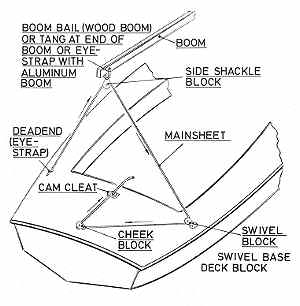
FIG. 5-6 - Ratio 2:1. This mainsheet is also used as the traveler, but requires at least some aft deck area. The main feature of this layout is the minimum of hardware required. Because the sheeting lead on the boom is at the aft end, roller reefing can easily be incorporated by hanging the side shackle block from a swiveling tang on the end of the boom. |
||
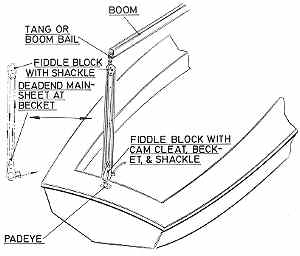
FIG. 5-7 - Ratio 4:1. This mainsheet rig is handy to use where roller reefing is desired. It would be possible to mount the lower fiddle block to a track so it could to move each side with the boom, acting as a traveler. If roller reefing is not used, the mainsheet arrangement could be located at some location along the boom, although this would increase the effort required to move the boom. |
||
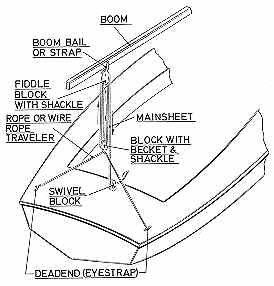
FIG. 5-8 - A system similar to Fig. 5-7, but using a rope or wire traveler similar to Fig. 5-4. This arrangement could also be located at the end of the boom for use with roller reefing. A cam cleat could be used at the swivel block so that the line need not be hand held. |
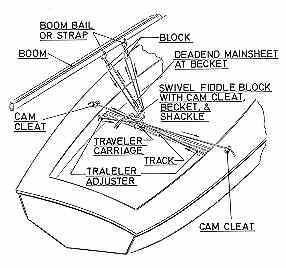
FIG. 5-9 - A rather elaborate system in that the traveler can be adjusted with lines each side via cam cleats. The fiddle block with cam cleat is used so that the line need not be hand held. |
|
Winches ease the work required in pulling or trimming the sheets, such as on jib sheets, as in Fig. 5-13. A winch gains mechanical advantage due to its gear ratio, diameter of the handle, and by the drum diameter of the winch. To determine the mechanical advantage (or power ratio), use the following formula: Radius of handle divided by the Radius of the drum X the Gear ratio = Power ratio. This means that power can be gained by either increasing the gear ratio, or radius of the handle, or decreasing the drum radius, or a combination of all three. Usually the drum radius should not be decreased because the winch will then do the work more slowly. On small boats such as being discussed here, most winches will not have gears and are thus referred to as "direct drive" winches such as shown in Fig. 5-14. Often used on small boats are winches which do not have handles either, and these are called "snubbing" winches (Fig. 5-15). Winches are usually relatively expensive items, and because mechanical advantage can be gained by other means, they are considered "deluxe" equipment on boats under about 25' in length.
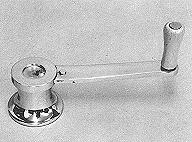
FIG. 5-14 - This is a typical example |

FIG. 5-15 - A typical snubbing winch as used for jib sheets on small sailboats. No handle is used. |